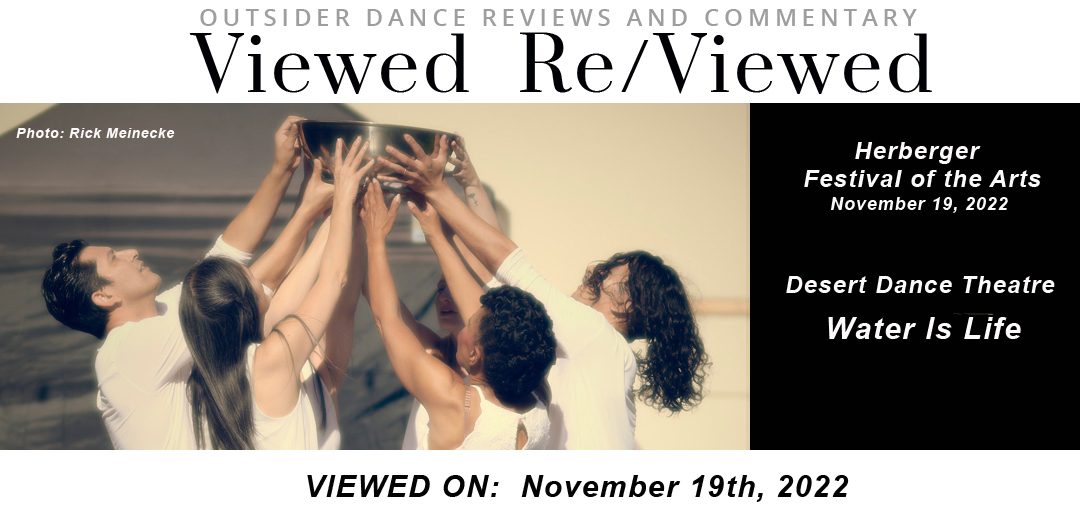Company: Desert Dance Theater
Choreographer: Lisa R. Chow
Performers: Lisa R. Chow, Renee Davis, Ignacio Jara, George Johnson, Arielle Lemke, Caroline Liddicoat
Music: Step Raptis
Some dance exists as pure movement. It can be experienced in isolation, in a crowd, against a dozen different backdrops, but it still “reads” and transmits its essence to the viewer. Some movement seems specific to a place or situation – it is a reaction to, or directed toward something. I believe that Desert Dance Theatre’s exceptional piece, Water is Life, lives in that second category. And for me, that was the problem.
I’ve seen this piece performed previously on stage at the Tempe Center for the Arts. Given the seriousness of its intent and its previous performance as part of the National Water Dance, I don’t know what I was expecting, but it was more than I experienced. I felt vaguely let down by the piece but couldn’t really articulate why.
After seeing Water is Life again at the Herberger Festival of the Arts, what was missing for me became more apparent. On a simple outdoor stage, the work took on another life. Raised arm gestures which seemed overly simplistic on the Tempe stage became celebratory under an open sky. I had a strong impression that this piece really wanted to live in the open air and be grounded, as in actual dirt, centered on a naturally occurring source of water. A bit fanciful, but that’s where my imagination took me.
From my perspective, there is also a prop problem. We never get a full sense of the presence and fundamental importance of water. The water is presented in a large stainless steel bowl placed in the center of the stage. We understand from the title that water is the subject of the piece, but do not really see it except as the dancers, huddled around the bowl, run some water briefly through their fingers – a small and somewhat obscured movement, and then the dramatic moment at the end where each dancer, again huddled around the bowl, flings some water into the air. The water is not established by being poured into the bowl in a visible and/or imaginative way and the bowl itself is not transparent so we never see it. I believe that the difficulty in experiencing the celebratory nature of the piece is that, from the perspective of the audience, it is directed toward a stainless steel bowl.
When I accessed the Desert Dance website to get the performers’ names, I came across a very professionally produced video of this piece as it was actually performed for the National Water Dance. All of my concerns seemed verified as I saw how well Water Is Life worked for this purpose-built outdoor celebration. For the dancers, surrounded by a body of water, the same central bowl was simply a convenient focal point. The raised arms in celebration were self-evident and effective – even the dancers’ underhand arm motions read as scooping water. In the final movement, with the dancers pouring the bowl into the larger surrounding body of water, it all came together in a powerfully symbolic gesture.
As designed and originally performed, Lisa Chow has created a celebratory, even reverential work acknowledging our fundamental relationship to the water on our planet, a piece which was highly attuned to a particular place and context. Detached from that environment, Water Is Life unfortunately has some difficulty translating to the stage.
Viewed Re/Viewed


Recent Comments